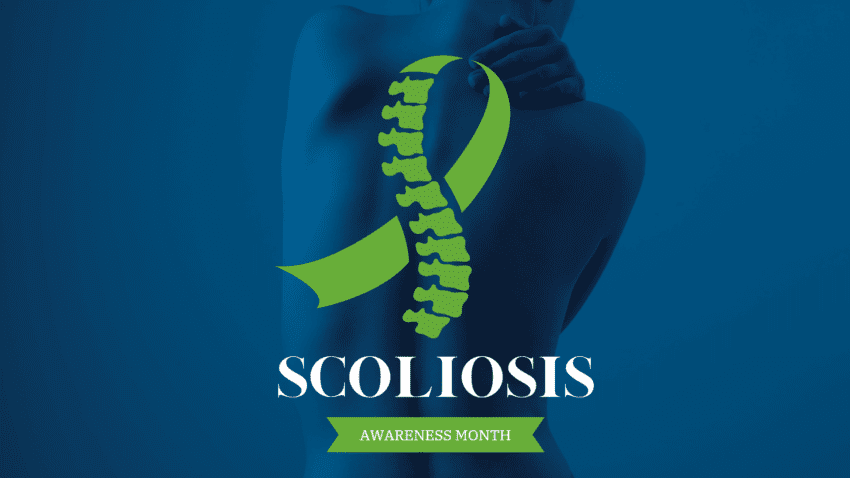Scoliosis is a condition which is characterised by abnormal lateral curvature of the spine, effectively ‘shifting’ the curved part of the spine towards either the left or right side of the body. The spine has natural curves which run in a forward-backward direction, helping to absorb shock, and position the head over the body’s centre of gravity. Scoliosis occurs when there is an abnormal spinal curvature to one side of the body, and this curve can often be twisted in slightly different directions along its length.
Research tells us that scoliosis is present in all age groups. Statistically, approximately 0.5% of children under the age of 5 have scoliosis and 2-4% of adolescents have it. In the working population the incidence is around 9%, and >30% of people over the age of 65 will have scoliosis. By the age of 90, a staggering 50-68% of people will have symptoms. The average age of onset is 10-15 years and whilst it is equally common in males and females, adolescent females are more likely to present with worsening scoliosis to the degree where it requires corrective treatment.
The main symptoms of scoliosis include sideways curvature of the spine, sideways body posture, one shoulder raised higher than the other and/or one hip higher than the other. Other symptoms can include clothes not hanging properly, muscular aches, and decreasing lung function (decreased lung volume and shortness of breath).
The cause of scoliosis can be congenital, neuropathic, or idiopathic.
Congenital scoliosis occurs due to embryological malformation of the vertebrae, where one part of the spine grows at a slower rate, causing spinal deformities and scoliosis.
Neuromuscular scoliosis is caused by neurological or muscular diseases, such as cerebral palsy, spinal cord trauma, muscular dystrophy, spinal muscular atrophy, and spina bifida.
All other scoliosis falls under the idiopathic label, which accounts for approximately 80% of all cases.
Treatment for scoliosis involves corrective exercise focused on stretching and mobilising the tight side, and strengthening the back, core, and hips. It is usually the case that one side of the back will be stronger than the other, so any strengthening program should be focused on correcting these imbalances. Strengthening work can come in the form of resistance training, pilates, or even yoga. It is worth noting that exercises to help scoliosis are generally quite effective when administered correctly, however it is not expected that this will completely ‘cure’ the scoliosis, but rather help to improve alignment and decrease pain and discomfort.
For more severe cases of scoliosis, braces and surgical treatment may also be required.
Severe scoliosis also brings with it a risk of pulmonary (lung) dysfunction, due to the inability of the lung to fully expand due to the altered skeletal mechanics. It is important that this is addressed by a health professional where necessary. If there are any pulmonary dysfunction issues, this is primarily addressed through breathing exercises and techniques, and thoracic mobilisation treatment and exercises.
If you have scoliosis, or think that you may have scoliosis, and are looking for help with scoliosis management, book an appointment with us today for a detailed assessment, treatment and planning.

